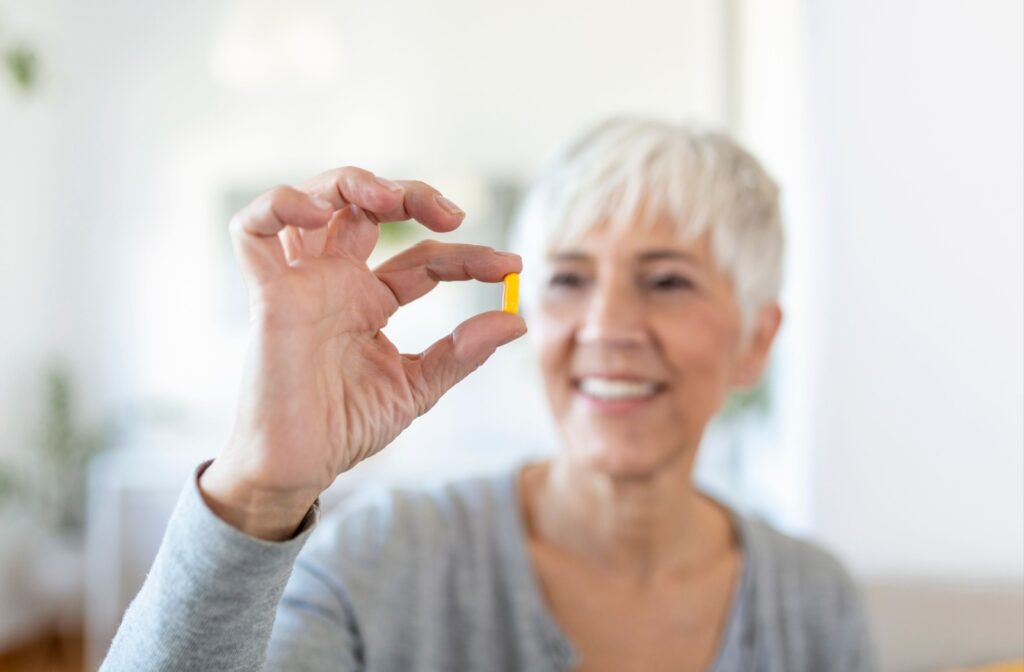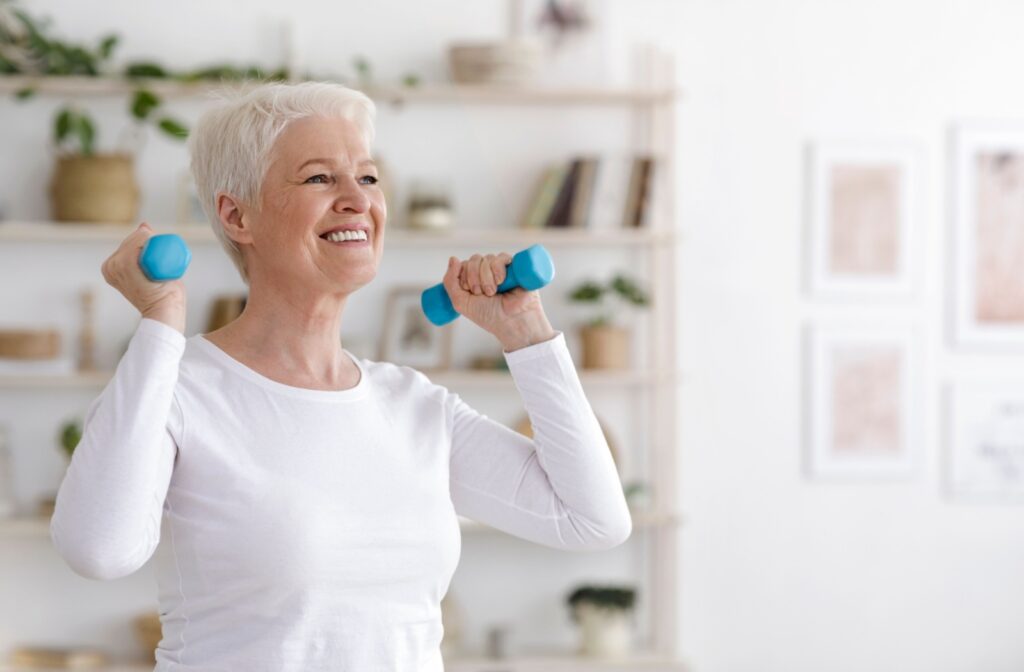As you age, your joints can become stiff and inflamed, making it difficult to get around. Seniors need to take proactive measures in the present in order to minimize joint discomfort and stiffness as they get older.
While aging is a natural process that everyone goes through, there are ways to help keep your joints healthy and avoid chronic pain as the years go by, like simple lifestyle changes or physical activities.
Here are a few tips for keeping your joints healthy as you age:
- Stay physically active
- Warm up and cool down before and after exercising
- Try strength training
- Avoid repetitive movements that can affect your joints
- Try low-intensity workouts
- Add omega-3 fatty acids to your diet
- Rest when needed
- Stay hydrated
- Use heat pads and ice packs to help alleviate joint pain
At Parsons House Austin, our services and amenities are designed to support the wellness of your loved ones as they age.
Staying Physically Active as You Age
As we age, it’s easy to fall into the trap of thinking that we don’t need to be as physically active as we once were. But the truth is that staying active can be more important than ever as we get older. Not only does exercise help maintain your physical health and mobility, but it can also have a positive impact on your mental well-being.
When we move our bodies, we release endorphins that can help us feel good, reduce stress, and increase cognitive function. Starting or maintaining an exercise routine may feel overwhelming, but it doesn’t have to be a monumental task.
Even small movements and activities like taking a walk, dancing, or doing some gentle yoga can make a big difference in how you feel both physically and mentally. Let’s aim to stay active and age gracefully together.
Warm Up & Cool Down Before & After Exercising
Whether you’re new to exercising or a seasoned pro, warming up and cooling down before and after a workout is essential for preventing injury and enhancing overall performance.
A proper warm-up helps prepare your body for the physical demands of exercise by increasing blood flow, loosening up your muscles, and improving your range of motion. Similarly, cooling down helps your body gradually transition back to its pre-exercise state, preventing dizziness or fainting and reducing muscle soreness.
Try Strength Training to Build Muscle Around Joints
Have you been experiencing joint pain and discomfort during your exercise routine? Have you considered incorporating strength training into your regimen to help build muscle around those achy joints? There can be a misconception that strength training is only for those looking to build bulk, but it can also be incredibly beneficial for joint health.
Training your joints can help you get more support and stability, ultimately reducing the strain placed on those areas during exercise. Don’t let joint discomfort prevent you from reaching your fitness goals. Adding some targeted strength exercises into your routine could help you start feeling stronger and reduce joint pain.
Avoid Repetitive Movements
It’s important to take care of our bodies, especially when it comes to activities that involve repetitive movements. While running, jumping, and weightlifting are great forms of exercise, they can also put a strain on your joints and muscles over time. However, that doesn’t mean you have to give up exercise altogether.
There are plenty of alternative activities that can provide a fulfilling workout without the constant strain of repetitive movements, such as swimming, yoga, or cycling. Finding an activity that works for you can help you maintain a healthy lifestyle while minimizing the risk of injury.

Try Low-Intensity Exercises Like Yoga, Pilates, & Tai Chi
If you experience joint pain and muscle stiffness or just prefer a gentler approach to fitness, then low-intensity exercises like yoga, Pilates, and tai chi might be perfect for you. These practices offer a unique blend of stretching, breathing, and relaxation techniques that can leave you feeling not only physically revitalized but mentally refreshed as well. The beauty of these exercises lies in the fact that they can be adjusted to any fitness level.
Increase Your Intake of Omega-3 Fatty Acids
There is some evidence that shows increasing your omega-3 fatty acid intake could help prevent joint pain for some conditions, such as osteoarthritis. While these healthy fats can be found in a variety of foods, oily fish is one of the best sources. If you’re not a fan of seafood, you can talk to your doctor about taking omega-3 supplements as a possible alternative.
Get Enough Rest
As we go about our daily routine, it’s easy to overlook the importance of getting enough rest. However, it’s vital to take the time to prioritize our sleep and maintain a consistent sleep schedule—whether that means going to bed at the same time each night or setting aside time for a midday nap.
Understandably, sometimes we might feel like taking a nap is a luxury we can’t afford, but the truth is that taking naps to recharge can be necessary for your productivity and well-being. So remember to make rest a priority in your life, and give yourself the gift of a well-rested mind and body.
Stay Hydrated by Drinking Water Throughout the Day
Staying hydrated is essential for maintaining a healthy body, and drinking enough water can make a world of difference in how you feel. One benefit of staying hydrated is that it helps to lubricate your joints, which can reduce discomfort and stiffness. If you’re someone who experiences joint pain, drinking plenty of water throughout the day may be just what you need to start feeling better.
Using Heating Pads & Ice Packs
Using heating pads and ice packs can be a simple and effective way to reduce inflammation and alleviate pain. Heat can help relax muscles and improve blood flow, which can promote healing. On the other hand, cold therapy can reduce swelling and numb sensations, which can help with managing joint pain.
Get Support for Reducing Joint Pain & Living Well
At Parsons House Austin, we understand the importance of staying physically active and eating healthy as you age—not just for joint pain but for living well in general. We nurture your personal growth and help you reach your goals with a variety of amenities that support your well-being, including healthy dining options, a yoga studio, fitness classes, and an on-site walking track. Visit our website today for more information, and book a tour to learn more about our community in person!


